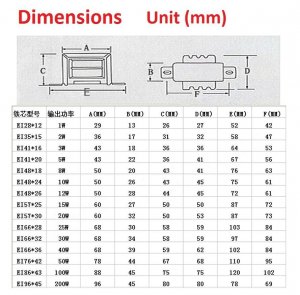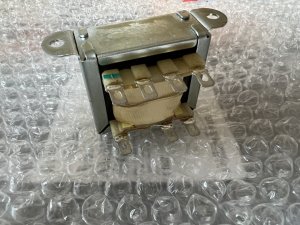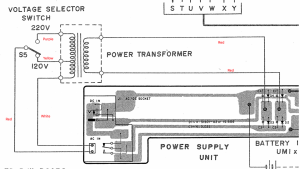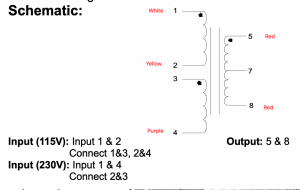Your proposed hookup is correct for a dual winding 120/240 transformer. This is the correct and best way to make up that arrangement (more on that later).
The factory used a single winding center tap configuration. Technically, it is correct that running 120v through a tap to one of the end winding terminals will allow it to output the same secondary voltage, as if 220v was run from end to end. However, when using the center tap with 120V input to get the same output voltage, you'll also end up with only 60% of the VA output as in the 220v configuration.
On the schematic, you'll notice that the primary tap is not in the middle. It is offset since 120V is not 1/2 of 220. This is also the reason the transformer probably blew up. I presume you are operating it in a 240V environment? People constantly say oh yeah, I use a 100V boombox in a 120V region and it's OK. Ok, but if you crank it up, maybe it's still OK. Maybe not. If it was still under warranty, it's almost a guarantee it won't be warrantied if used with 240V.
Unfortunately, the input voltage switching circuit is simple and not compatible with a dual winding setup. You can modify it but if the boombox is never going to a 120V region, just ignore it.
About the secondary center tap-- you can safely ignore or snip it. You won't need it. It would make it very convenient if you are setting up a dual supply circuit (such as one that has +DC/-DC type system), but for this and most boomboxes, you won't need it.
If you wanna play with ohms law, you'll be able to figure this out on your own. Suffice it to say that if you run 240V through 2 identical transformer coils run in series, you'll get a certain VA. If you run 1/2 the voltage though 2 separate coils, run in parallel, you'll consume twice the current but the final VA will be the same. This will not be the case with a middle tapped transformer since you cannot split the coils to run them in parallel. Therefore you'll only get a fraction of the output. If it was a center tap, you'll get 1/2 the output since only 1/2 of the primary coils will be used.
------------------------------------
If you are getting confused, just connect them in series, make sure the phase connections are correct, or else the fields will cancel themselves out & you'll end up with no output, maybe damage the transformer. Before connecting the secondaries to the boombox, meter them (on AC) to ensure you are getting the proper output voltage. If it's wrong (0, or 1/2 or 2x the expected amount), stop and recheck. At least by replacing the transformer with a correct 240v unit (instead of 220v version), you are correcting the power supply to enable proper 240v operation. If it reads slightly low, don't worry. The voltage will jump up significantly once rectified to DC.







